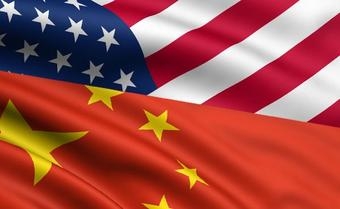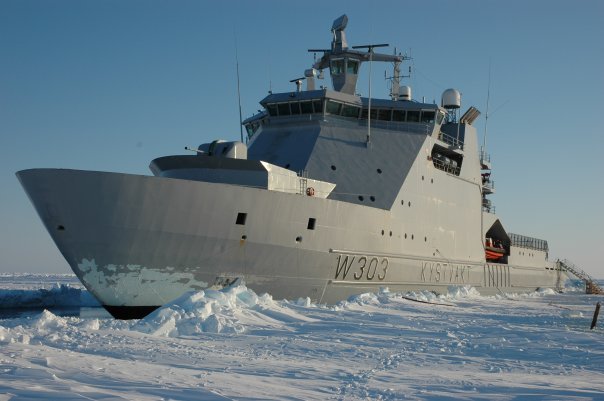Territorial disputes in Asia Pacific make headlines, but are underpinned by long-term strategies and trends, especially those of the US and China, which will shape the region in years to come.
From May 31 to June 2, key officials and others gathered in Singapore for the 2013 Shangri-La Dialogue for a high-calibre discussion highlighting the many facets of Asia Pacific security, including territorial disputes in the South and East China Seas. Mostly between China and other states, the actions and emotions surrounding these disputes often make headlines, but they are underpinned by longer-term trends and strategies, most importantly those of the most powerful players, the United States and China.
China’s somewhat vague, historical ‘nine-dash line’ claim encompasses most of the South China Sea, bringing it into disputes with the Philippines, Vietnam, and Malaysia. In the East China Sea it is engaged in a dispute, again based on competing histories, over the Diaoyu Islands with Japan (where they are called the Senkaku Islands). Apart from history, these disputes are driven by the great importance of the two seas to global trade and regional fishing, and by the potential for resource extraction.
[captionpix align=”right” theme=”elegant” width=”350″ height=”500″ imgsrc=”http://cimsec.org/wp-content/uploads/2012/07/senakaku-island.jpg” captiontext=”The Senkaku isles on the East China Sea”]
Over the past three decades Asia has been the key engine of global economic growth, a trend that is almost certain to continue in years to come, placing the region squarely on the global radar. During this time, the rapidly growing China became much more connected to the world economy, began to modernize its military, and turned its gaze seaward.
China has attempted to establish direct, bi-lateral negotiation as the template for dispute resolution, rather than seeking international (UN) arbitration as called for by smaller states like Vietnam and the Philippines. In part, this is to secure a Chinese balance of power advantage and in this vein China has sought to reinforce its claims with increased naval activity, deploying ships and fleets in close proximity to disputed territories during flare-ups and hosting larger exercises nearby as well.
As a result, many smaller countries have turned to the United States to ensure their security, a trend the US has embraced with open arms. As noted by Secretary of Defence Chuck Hagel, the US seeks to construct a new regional security architecture anchored to long-standing alliances with Japan, South Korea, and Australia, and extended through deepening diplomatic and military relations with ASEAN countries. This is underpinned by the Obama administration’s ‘pivot,’ to Asia Pacific, which aims to see 60% of US naval capability and US Air Force overseas capability deployed to the Pacific by 2020. Current centerpieces are the rotational deployments of Littoral Combat Ships to Singapore and US Marines to Australia.
Chinese strategy is also playing out at this level, where it is moving away, partly, from its strict emphasis on bi-lateral relations in favour of “semi-alliances,” for example through engagement with ASEAN and through tri-lateral summits. This allows China both to shape policy within those organizations and to reassure its neighbours, potentially disrupting US-driven regional structures and allowing China greater room for manoeuvre. Evolving capabilities and practices have been factors as well: China’s military technology has advanced rapidly, drawing a great deal of US attention; it has also confronted US policy, mirroring American ship and aircraft deployments in its 200-mile exclusive economic zone.
But the greatest restrictions for both countries may be on the domestic front. Recent flare-ups in the East and South China Seas have showcased the intense public emotions related to territorial disputes and prompted greater assertiveness by China and other governments as a means to placate their publics, further intensifying inter-governmental tensions and making it more difficult to achieve effective international compromises.
In the long-term, both China and the United States face significant domestic challenges. Robinson and Acemoglu (Why Nations Fail), Ian Bremmer (Every Nation For Itself) and others have made clear that to ensure continued growth China must soon confront the need for deep political and economic reforms and action on environmental degradation, among other challenges. Historically, China has often turned inward when facing domestic difficulties, forsaking the seas even at the cost of economic growth. Any such move would have significant implications for security in Asia Pacific.
The US faces great challenges as well. High public debt, slow economic growth, and cuts to the defence budget (beginning with the current impact of sequestration) are likely to be part of US budgeting for some time. Basically, as pointed out by Bremmer and by Zbigniew Brzezinski (Strategic Vision), the US faces massive political and economic investments in renewing and upgrading its physical and cyber infrastructure, as well as a host of other issues. At the same time, the US will have to shift parts of the global security burden to other states (including China) while many (in Europe especially) are struggling with political and economic challenges of their own.
Because of these challenges, the long-term organization of security in Asia Pacific remains uncertain. If one power falters, the other will step into the gap and build structures favourable to its interests. If both do, smaller states will play a greater role. If neither does, the current ambiguity seems likely to continue. Whatever occurs, the outcome will be of great importance not only to the region but to the world.




